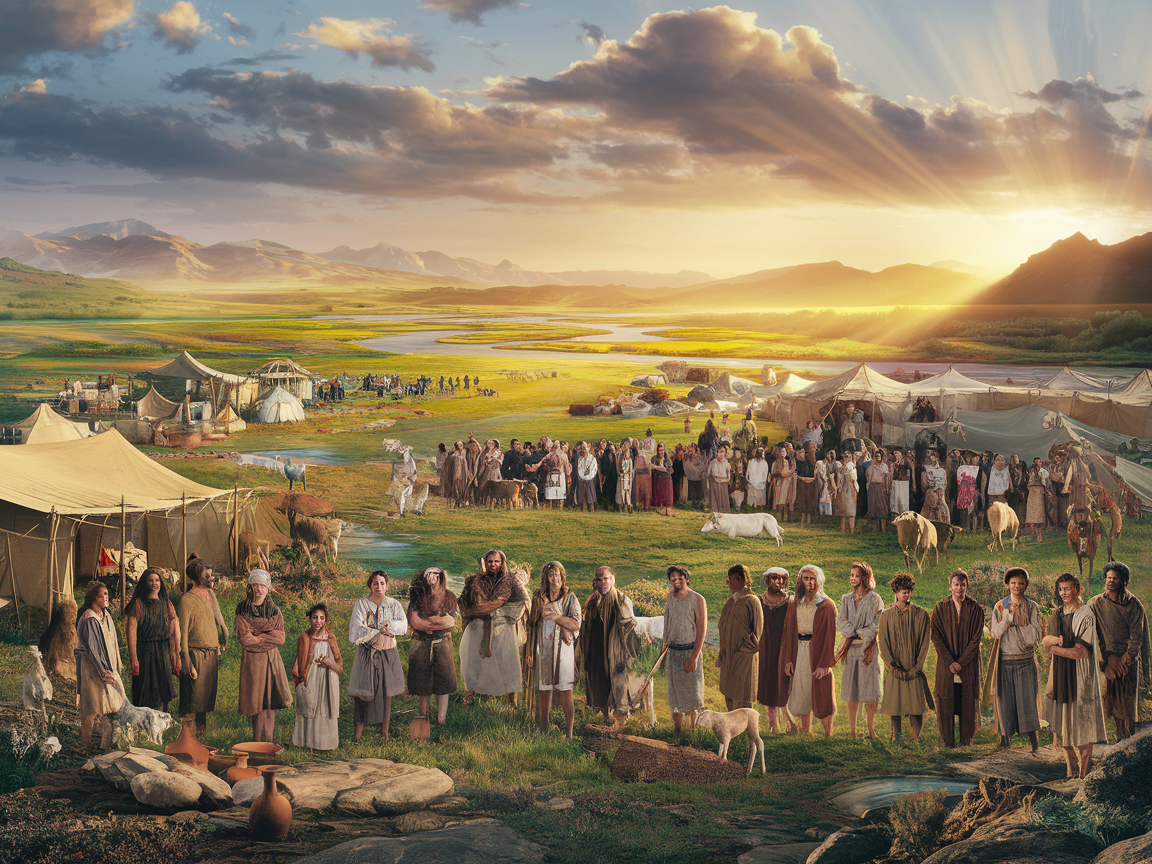Genesis 10: Understanding the Roots of Humanity
Genesis 10, often called the Table of Nations, is a unique chapter in Scripture that provides a genealogical record of the descendants of Noah’s three sons—Shem, Ham, and Japheth. This chapter outlines the origins of nations and languages, giving us a foundation for understanding the dispersion of humanity across the earth after the Flood.
While it might seem like a simple list of names, the Table of Nations is rich with historical and theological significance, revealing God's sovereignty over the nations and His unfolding plan for redemption.
An Overview of Genesis 10
The chapter is structured around the descendants of Noah’s three sons:
- Japheth’s Line (Verses 2-5): The peoples who would inhabit the northern and western regions.
- Ham’s Line (Verses 6-20): The peoples who settled in Africa, the Middle East, and parts of Asia.
- Shem’s Line (Verses 21-31): The Semitic peoples, from whom Abraham and eventually the Messiah would come.Each family branch highlights the spread of tribes, languages, and territories, culminating in verse 32, which summarizes:
“These are the families of the sons of Noah, after their generations, in their nations: and by these were the nations divided in the earth after the flood.”
Japheth: The Expansion of the Gentiles
“By these were the isles of the Gentiles divided in their lands...” (Genesis 10:5)
The descendants of Japheth are often associated with the people who settled in Europe and parts of Asia.
Names such as Gomer, Magog, and Javan are linked to regions like the Scythians, Greeks, and other early civilizations. Japheth’s lineage is connected to the broader Gentile world, showing the wide geographical spread of humanity.
Ham: The Builders of Civilization
Ham’s descendants include Cush, Mizraim, Phut, and Canaan, whose names are tied to ancient civilizations such as Ethiopia (Cush), Egypt (Mizraim), and Canaan. A notable figure is Nimrod, described as a mighty hunter and the founder of powerful cities such as Babel, Nineveh, and others (Genesis 10:8-12). Nimrod’s rise marks the beginning of organized city-states and centralized power.
This lineage highlights the cultural and technological advancements of early human civilization, but also hints at rebellion, as Nimrod’s connection to Babel foreshadows humanity’s defiance against God in Genesis 11.
Shem: The Line of Promise
“Unto Shem also, the father of all the children of Eber...” (Genesis 10:21)
Shem’s descendants form the foundation of the Semitic peoples, including the Hebrews, Arabs, and others. The name “Eber” is significant, as it is linked to the term “Hebrew.” Through Shem’s line would come Abraham, Isaac, Jacob, and ultimately, Jesus Christ.
This genealogy sets the stage for the covenantal promises that God would make with Abraham in Genesis 12, showing that His redemptive plan for humanity is rooted in history.
Theological Insights
- God’s Sovereignty over Nations:
- The Table of Nations demonstrates that God is in control of the nations, their boundaries, and their histories (Acts 17:26). No nation rises or falls outside His divine plan.
- Unity and Diversity in Humanity:
- While humanity shares a common ancestry in Noah, the diversity of nations and languages reflects God’s design and purpose. This diversity is later mirrored in the global scope of salvation through Christ (Revelation 7:9).
- Preparation for Redemption:
- The genealogy lays the groundwork for understanding the redemptive narrative. Through Shem’s line, God’s promise to bring forth a Savior takes shape, leading to Jesus, the Redeemer of all nations.
Application for Today
The Table of Nations reminds us of the interconnectedness of humanity. Regardless of race, language, or culture, we all trace our origins back to Noah and ultimately to Adam. This shared heritage underscores the biblical truth that all people are created in the image of God (Genesis 1:27) and are equally in need of His saving grace.
Moreover, the chapter calls us to trust in God’s sovereign plan. Just as He orchestrated the dispersion and rise of nations, He is at work today, guiding history toward His ultimate purpose—the return of Christ and the establishment of His eternal kingdom.
Conclusion
Genesis 10 is far more than a genealogical record; it is a map of humanity’s origins and a testimony to God’s providence and plan for redemption. As we study the Table of Nations, we are reminded of God’s faithfulness to His promises and His desire for all nations to come to know Him.
Let us celebrate our shared heritage and look forward to the day when people from every tribe, tongue, and nation will worship the Lamb together in heaven (Revelation 5:9).
Explore More About God’s Plan for Humanity
Discover the roots of humanity and God’s sovereignty over the nations by diving into Genesis 10. Learn how His plan for redemption unfolds through history.
📖 Watch our in-depth Genesis reading video on YouTube!
🌍 Subscribe to our channel, Rooted and Radiant, for more Bible insights and faith-building content.
🔗 Click here to watch now and grow in God’s Word.


Comments ()